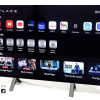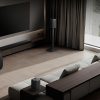Background:
The High Definition TV “experience” continues to drive manufacturers to offer truly digital devices. The days of analog video interfaces are limited. In previous articles, we touched on HDMI connections. It is clear that HD sources such as DVD players, Cable settop boxes, satellite boxes are transitioning to the HDMI standard. It is inevitable that future HD sources such as HD DVD players (HD or Blue Ray), and Playstation 3 will utilize HDMI as the interface standard. With all these new HDMI source, how does one get the desired input to the HD monitor? In this article, we will get into the details of such a device: the HDMI switch.
What is a HDMI switch:
A HDMI switch allows the end user to select multiple HDMI sources, such as DVD players, settop boxes, into 1 HD monitor. The basic models available are 2×1 HDMI switch, which simply means that there are 2 inputs and 1 output. The 2X1 HDMI switch allows the user to switch between 2 HDMI sources. There are also 4×1 HDMI switches available which allows the user to select up to 4 HDMI sources. By the way, we highly encourage users to select 4 port model for future expandability.
Why do I need a HDMI switch: Anyone who has a HD monitor with less than the desired number of HDMI inputs can use an external HDMI switch to expand the system.
What features do I look for in a HDMI switch:
- Expandability: 4 ports devices are recommended for future expandability. If you use a 2 port, then you have no expandability. It is likely that future HD sources such as games stations, HD DVD player/recorders will utilize HDMI.
- HDCP transparancy: any switch must pass HDCP data between source and monitor.
- Backward compatibility with DVI-D: There is a mix of both HDMI and DVI-D devices in the field. Users should select a HDMI switch rather than a DVI-D switch since HDMI is backward compatible with DVI-D. With a HDMI switch., the user just chooses the correct cables needed; either HDMI or HDMI to DVI-D to customize to your system.
- Remote control: A remote control to select the desired channel is essential.
Design consideration of a HDMI switch:
HDMI is extremely high speed digital transmission standard with an aggregate data rate of ~4.95 Gbps. Jean Baptiste Fourier (1768-1830) showed that any signal waveform can be resolved into a summation of harmonically related sine waves. The amplitude of the sine waves can be determined by calculation of Fourier transforms.
So what in the world does some dead French mathematician have to do with the HDMI switch? Well, Fourier tells us that the waveform is a summation of harmonically related sine waves. Therefore, higher data rate, higher frequency sine waves. Incidentally, the frequency of the fundamental sine wave is ½ of the data rate. For example, the fundamental frequency of a 2 Gbps ( 50 %duty cycle ) square wave is 1GHz.
As data rates increase, every aspect of the switch design (every millimeter) becomes critical because the wavelengths of the signals approach the size of the components on board. The 3 critical parameters to consider are:
Impedance Match:
HDMI is based on a 100 ohm (differential) impedance. It is imperative that the switch be optimized to match this characteristic impedance. Any imperfections of the board layout will cause “reflections” which degrades signal transmission to the HD monitor. Think of “reflections” as signals that are lost between the inputs to the output. Utilizing careful RF and Microwave layout techniques minimizes these reflections.
Minimum Insertion Loss:
Signal loss should be minimized in order to maximize signal integrity to the output of the HDMI switch. Again, utilizing careful RF and Microwave layout techniques minimizes insertion loss.
Minimum Cross Talk:
With multiple inputs (up to 4), all potentially being active at same time, it is imperative that the desired channel not be interfered from any undesired channels. Again, careful RF microwave design techniques minimize cross talk.
Conclusion:
HDTV technology is changing rapidly. HD connections such as HDMI will become the de facto standard in HDTV connections. With increased HDM sources, an external HDMI switch will be needed in order for the user to select the desired input. We have outlined the important features of a good HDMI switch , along with the design considerations involved.
Biography:
Jeff Su is product marketing manager at Octava Inc. http://www.octavainc.com. Jeff is a graduate of the Georgia Institute of Tecnology (BSEE, MSEE) and has over 10 years of experience in CATV systems, RF, and microwave designs.





























